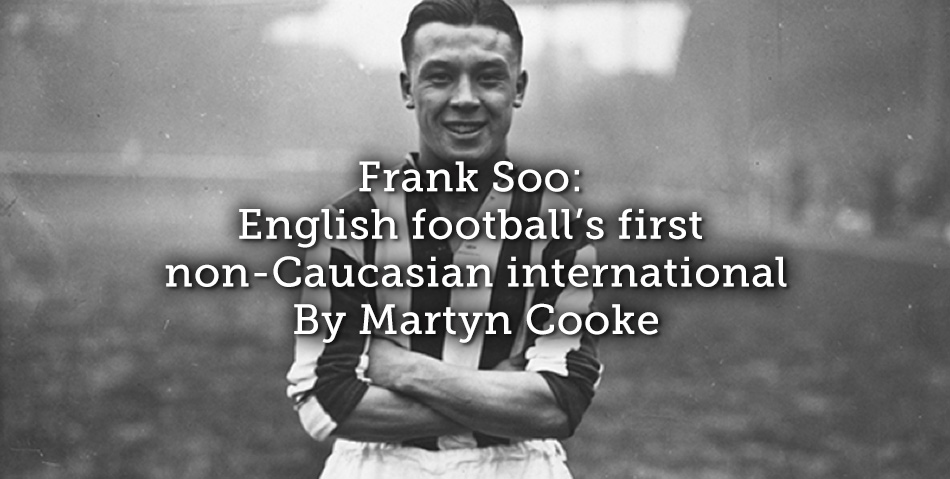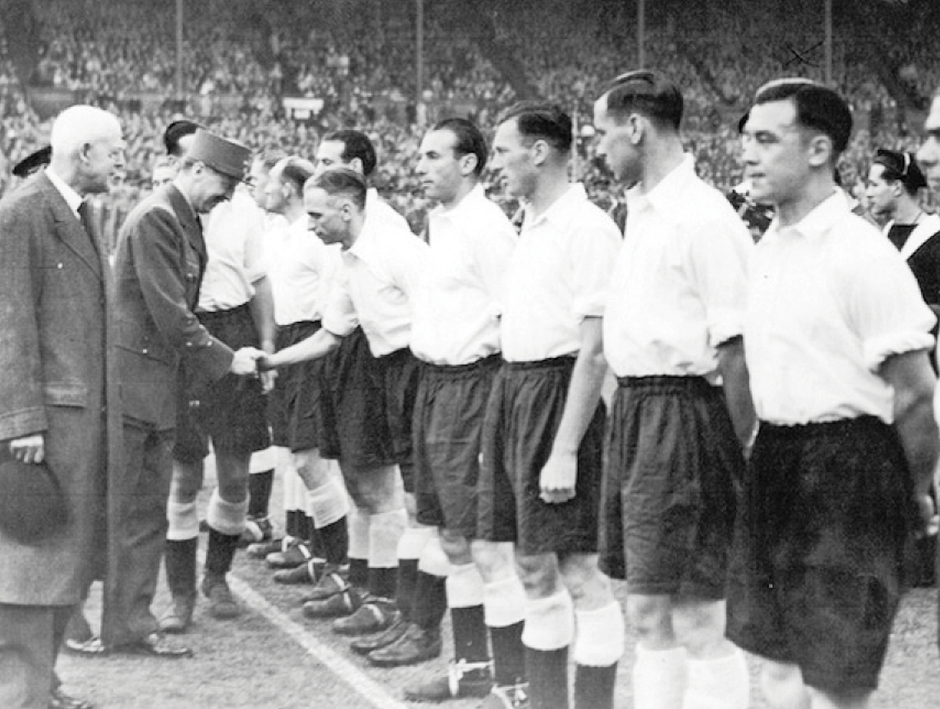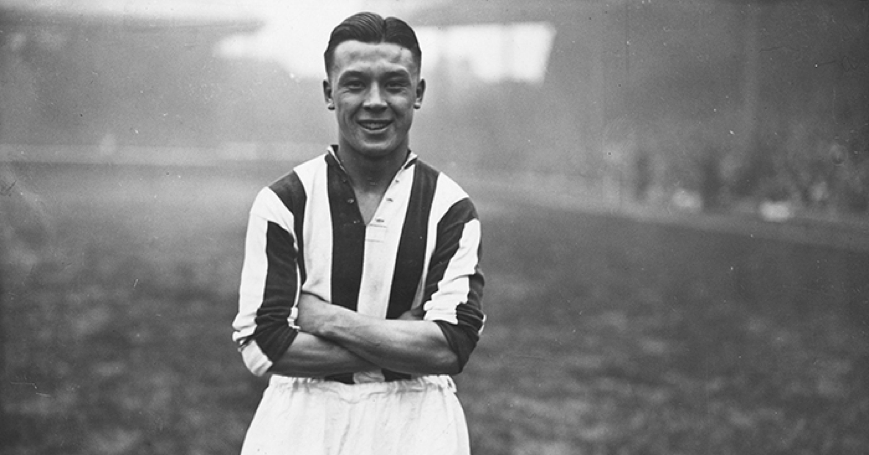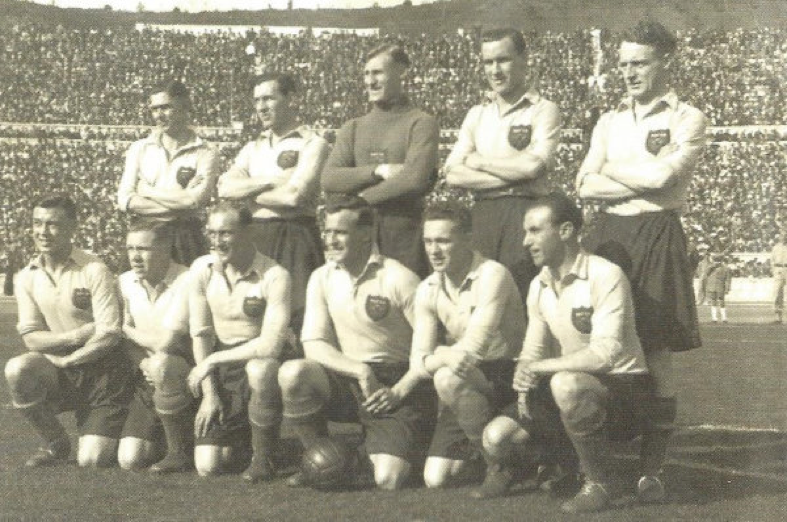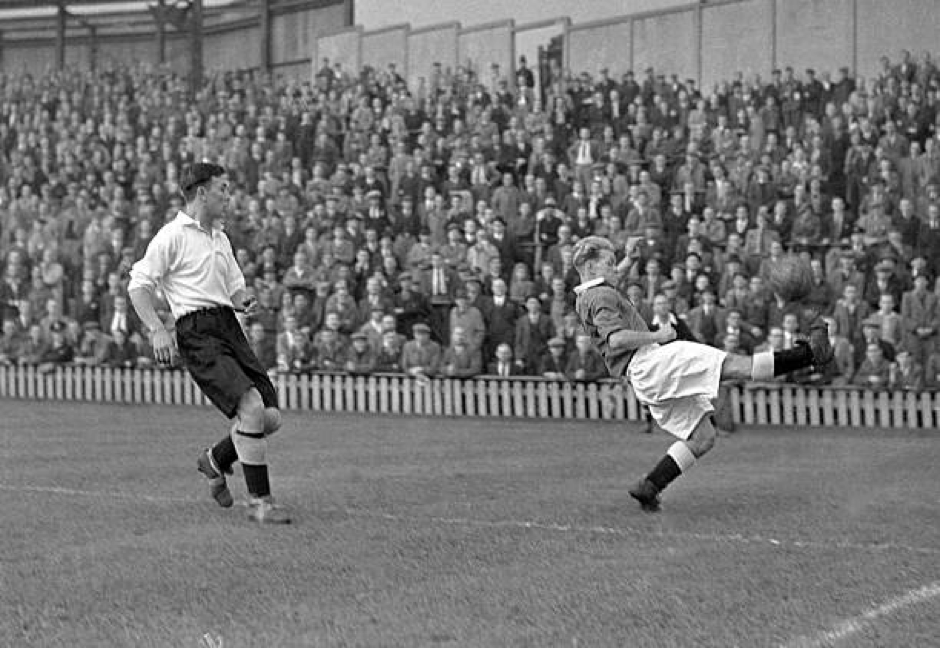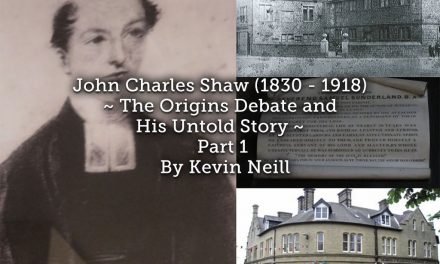Viv Anderson is widely perceived to have been the first non-Caucasian or ‘man of colour’ to represent the senior English national football team when he made his international debut against Czechoslovakia in 1978. The defender would go on to win a total of 30 caps during his career and his breakthrough is seen as a defining moment in the development and evolution of the English game.
However, the assertation that Anderson was the first non-Caucasian to gain international recognition is incorrect and he was in fact proceeded by another ‘man of colour’ during the Second World War.
Frank Soo, a half-back and inside forward of mixed Chinese heritage, made a total of nine appearances for the England national team between 1942 and 1945 in wartime international fixtures. He featured in a team which included legendary figures such as Stanley Matthews, Tom Finney and Joe Mercer whilst he was also in the starting line-up in the England side that beat Scotland 6-2 in front of just under 100,000 spectators at Wembley in October 1944.
- Frank Soo in the England Line-up
However, Soo’s accomplishments have, until recently, been entirely overlooked by the football world and, despite the efforts of Phil Vasili and Susan Gardner, he remains a relatively unknown figure who is worthy of only a couple of sentences in the majority of record and history books. This oversight is a result of the English Football Association (FA) not recognising wartime international matches as being ‘official’ fixtures, leaving the half-back an allusive statistic amid the annals of football history.
Rise to prominence
Frank Soo was born on March 12th 1914 in Buxton, Derbyshire, and was raised in West Derby, Liverpool, along with his six siblings. His father, Our Quong Soo was a Chinese migrant who arrived in England at some point in the early twentieth century and had married a local girl, Beatrice Whittam, whilst also opening a laundry.
Soo was the second eldest sibling in the family and he is described as being a fitness fanatic who showed a keen interest in sport from an early age. His keenest passion was for football and was reported as being ‘one of the best boy footballers ever seen in Liverpool’ after successful spells representing Liverpool Schoolboys and Derby Boy’s Club prior to leaving school to work as an office clerk.
He initially joined amateur side Prescot Cables where he played for two seasons before Stoke City manager Tom Mather signed the then nineteen-year-old for £250 in January 1933. Soo’s transfer ‘created the greatest interest among football followers’ and he became the first player of Chinese heritage to appear in the Football League when he made his first team debut in November 1933 against Middlesbrough.
The half-back quickly rose to prominence at Stoke over the subsequent decade with his performances making him a crowd favourite at the Victoria Ground and earning him a reputation for being one of the most creative players in the Football League. At the age of 27 he was handed the club captaincy, underpinning the respect that he held among his peers, and was famed for being a ‘classy and artistic player’ who utilised ‘perfect forward passes’.
In fact, Soo became something of a celebrity and his ethnicity appears to have added to the public’s interest and intrigue in him rather than attracting any racial slurs or criticism. When he married Freda Lunt in 1938, a local girl from Stoke, the ceremony was reported in both the local and national press, emphasising his fame and the positive perception in which he was held.
- Frank Soo (Stoke City)
International recognition
The outbreak of the Second World War in 1939 caused substantial disruption to the way that football was organised in Britain although the game did continue under strict travel, equipment and personnel stictions. Like many other players during this period Soo looked to aid the war effort through joining the armed forces and in 1940 he enlisted in the Royal Air Force (RAF). He was initially stationed at a barracks in Blackpool and he made every effort to travel back to Stoke in order to continue playing for Stoke, but as the country became further embroiled in conflict his appearances at the Victoria Ground became less common.
The Football League introduced a system where players could appear as a ‘guest’ for clubs that they were not contracted to in order to help alleviate the selection issues that many teams were experiencing. Supporters of Chelsea, Brentford, Everton, Port Vale and Leicester City would have been pleasantly surprised to have found Soo appearing for their side on a add-hock basis as his military responsibilities meant that he was stationed in different localities across the country.
Soo made his debut England against Wales at Ninian Park in May 1942 and, following an increasing clamour from the national press calling for the half-back’s inclusion, his selection came as little surprise. He made a total of nine appearances in wartime internationals with his final game occurring in October 1945 at Wembley. Ultimately, the war had stolen the prime years of his career and the opportunity to represent the national team did not re-emerge once peace had been resumed.
- Frank Soo in an official England group photo
Leicester City, Luton Town and Chelmsford City would be Soo’s intermittent destinations in the twilight years of his playing career prior to announcing his retirement in 1950 before then embarking on an expansive coaching career in Europe. He worked extensively in Scandinavia, where he won the Swedish Championship with Djurgaardens in 1955, but also had short spells managing in Italy and England in charge of Padova and Scunthorpe United respectively.
Soo would return to England in his later life and died in January 1991.
- Frank Soo playing with Luton Town
Beginning to readdress the balance
The FA’s decision to not recognise wartime international fixtures as ‘official’ matches meant that the achievements of Soo have remained hidden for much of the last three decades. However, senior Stoke City supporters will still talk about ‘Frankie Soo’ in excited, romanticised tones if you ever pose the question whilst the invaluable work of Phil Vasili in Colouring Over The White Line and Susan Gardiner in her biography The Wanderer have begun to readdress the balance.
Soo was the first non-Caucasian to represent the senior England team, the first player of Chinese heritage to appear in the Football League and also one of the first British coaches to work abroad.
His career and accomplishments deserve much greater recognition.
Article © Martyn Cooke

